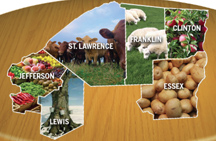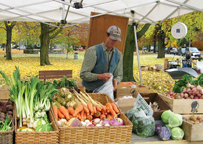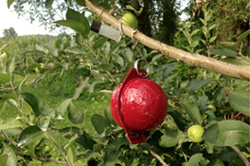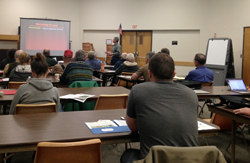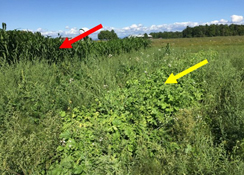
2024: Improving High Tunnel Production in Northern NY plus Swede Midge Management Ground Barrier Trials
2023: Alternative High Tunnel Crops for NNY Growers: Melons and Winter Greens with Enterprise Budgets
2022: Winter Greens Production & Marketing Potential for NNY
2021: Extending the Season in Northern NY with Brassica Crops with Winter Broccoli Trial Result
2019: Advancing Vegetable Production in NNY 2019: Reducing Cucumber Beetle in High Tunnel-Grown Cucumbers, Nitrogen Uptake in Winter Spinach, Ground Cherry and Goldenberry Training Methods
Video: Winter Growing Webinar; go to 43 minute point to learn about NNYADP winter spinach trials
Short Video (1 min) showing ground cherry harvesting with harvesting frame built at the Willsboro Research Farm
2018: Advancing Vegetable Production in NNY
2017 Advancing Vegetable Production in NNY:
Report Appendix 1: Peppers Appendix 2: Tomatoes Appendix 3: Spinach
Pruning for Productivity
2016 Advancing Vegetable Production in NNY:
Results Report
Appendix A: Summer Cover Crop Tables and Figures
Appendix B: Cherry Tomato Pruning Trials Figures
Appendix C: Cherry Tomato Variety Trials Figures
Appendix D: Summer Cover Crop Photos
Disease Management
Blight: Late Blight Identified in NNY Tomatoes July 23, 2012
Blight: Tomato Late Blight: Cornell
Leaf Mold: Leaf Mold in High Tunnel Tomatoes, NNYADP, 2014
Foliar Testing and Fertigation
Managing Fertility to Increase Yield in Vegetables, Part I, NNY, 2011
Managing Fertility to Increase Yield in Vegetables, Part II, NNY, 2012
HIGH TUNNEL CROPS
Also see 2016, 2017, 2019 Advancing Vegetable Production in NNY reports at the top of this page
Cherry Tomato Pruning and Training: High Tunnel Best Management Practices Fact Sheet, 2018
2015: Season Extension with Basil, Ginger, Summer Lettuce, Turmeric
2014: Season Extension with Non-Traditional High Tunnel Crops
2014: Leaf Mold on High Tunnel Tomatoes Fact Sheet, NNY
2012: Management of Winter Greens Production in NNY, 2012
2011: Management Strategies for Fall/Winter Greens Production in NNY, 2011
Graphs, NNYADP, 2011
Photos 1, NNYADP, 2011
Photos 2, NNYADP, 2011
2010: Season Extension with NNY High Tunnels
2009: Season Extension with High Tunnels
2008: Season Extension with NNY High Tunnels
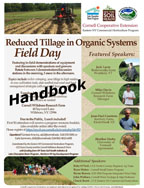 Reduced Tillage
Reduced Tillage
Reduced Tillage Field Day Handbook (requires Acrobat Reader 9 or higher) or click here to read online
Evaluating Crop Establishment & Future Needs of NNY Vegetable Growers, 2014
Vegetable Cover Crops Research
2015: Inter-Row Cover Crops for Plasticulture Vegetables
Appendix 1: NNYADP Plasticulture Vegetables Cover Crop Study 2014 Crop Plan
Appendix 2: 2014 Sweet Onion Cover Crop Trial
Appendix 3: Cover Crop to Weed Ratio with Outliers Removed
Photos
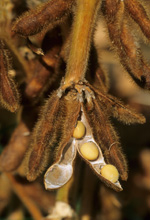
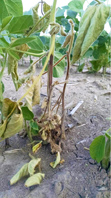
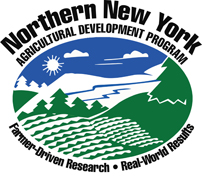 Chazy, Canton, NY; January 23, 2017. The 2017 North Country Crop Congresses will feature updates on research projects funded by the farmer-driven Northern New York Agricultural Development Program. The Program provides small grants for on-farm research and technical assistance projects in Clinton, Essex, Franklin, Jefferson, Lewis and St. Lawrence counties.
Chazy, Canton, NY; January 23, 2017. The 2017 North Country Crop Congresses will feature updates on research projects funded by the farmer-driven Northern New York Agricultural Development Program. The Program provides small grants for on-farm research and technical assistance projects in Clinton, Essex, Franklin, Jefferson, Lewis and St. Lawrence counties.